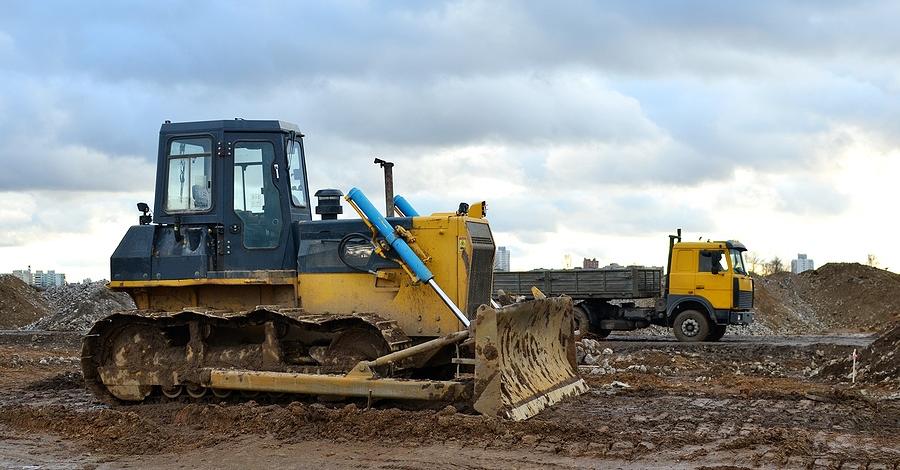In the dynamic world of construction, securing assets and preventing theft are paramount concerns for business owners. Construction sites are often sprawling, with expensive machinery, materials, and tools dispersed across large areas. This makes them attractive targets for thieves. However, the advent of telematics technology offers a sophisticated solution to these challenges, enabling construction companies to protect their assets effectively and enhance operational efficiency.
Telematics combines telecommunications and informatics to provide detailed information on the location and status of vehicles and equipment. By integrating GPS technology with onboard diagnostics, telematics systems can transmit real-time data to a central platform accessible to business owners and site managers. This capability has revolutionised the way construction companies monitor and manage their assets.
One of the primary benefits of telematics in the construction industry is its ability to prevent theft. Thefts from construction sites can lead to significant financial losses, project delays, and increased insurance premiums. By equipping vehicles and machinery with telematics devices, companies can track their assets in real-time, receiving instant alerts if any equipment is moved unexpectedly or outside of predefined working hours. This immediate notification allows for swift action, such as alerting site security or law enforcement, thereby increasing the likelihood of recovering stolen assets and deterring potential thieves.
In addition to preventing theft, telematics also enhances asset tracking, a critical aspect of construction site management. Traditional methods of tracking assets, such as manual logs or basic inventory systems, are prone to errors and can be time-consuming. Telematics systems automate this process by providing precise, up-to-date information on the location and status of each piece of equipment. This not only helps in preventing theft but also ensures that assets are optimally utilised. Site managers can quickly locate equipment, reducing downtime and improving project efficiency. Furthermore, detailed utilisation reports can inform maintenance schedules, ensuring that machinery is serviced regularly and reducing the risk of unexpected breakdowns.
Another significant advantage of telematics is its role in improving site safety. Construction sites are inherently hazardous environments, and the safety of workers is a top priority. Telematics can monitor operator behaviour, such as speed, harsh braking, and idling time, providing valuable insights into driving patterns. By analysing this data, companies can identify and address unsafe practices, offering targeted training to improve operator skills and reduce the likelihood of accidents. Additionally, in the event of an accident, telematics data can be crucial in understanding the circumstances, aiding in investigations and helping to prevent future incidents.
Telematics also contributes to cost savings in several ways. By providing detailed data on fuel consumption, telematics systems enable companies to monitor and manage fuel usage more effectively. This can lead to significant cost reductions, particularly for companies with large fleets of vehicles and machinery. Additionally, optimising the utilisation and maintenance of assets can extend their lifespan, reducing the need for costly replacements. Insurance companies may also offer reduced premiums for assets equipped with telematics, recognising the lower risk of theft and accidents.
Implementing telematics technology requires an initial investment, but the return on investment can be substantial. Business owners should consider the long-term benefits of enhanced security, improved asset management, increased safety, and cost savings. Moreover, the data generated by telematics systems can provide valuable insights for strategic decision-making. For instance, analysing equipment utilisation patterns can inform future purchasing decisions, ensuring that investments are aligned with actual usage needs.
The integration of telematics with other technologies can further enhance its benefits. For example, combining telematics with RFID (Radio Frequency Identification) tags can provide even more precise asset tracking. RFID tags can be attached to smaller tools and materials, which might not be equipped with telematics devices, ensuring comprehensive site-wide asset management. Additionally, integrating telematics data with project management software can streamline operations, providing a holistic view of project progress and resource allocation.
In conclusion, telematics technology offers a powerful solution for construction companies looking to safeguard their assets and prevent theft. By providing real-time tracking and detailed data on equipment and operator behaviour, telematics enhances security, improves asset management, and contributes to overall site safety and efficiency. While the initial investment may be considerable, the long-term benefits make telematics an invaluable tool for construction business owners committed to protecting their assets and optimising their operations. As the construction industry continues to evolve, the adoption of advanced technologies like telematics will be crucial in maintaining competitive advantage and ensuring the success and sustainability of projects.

